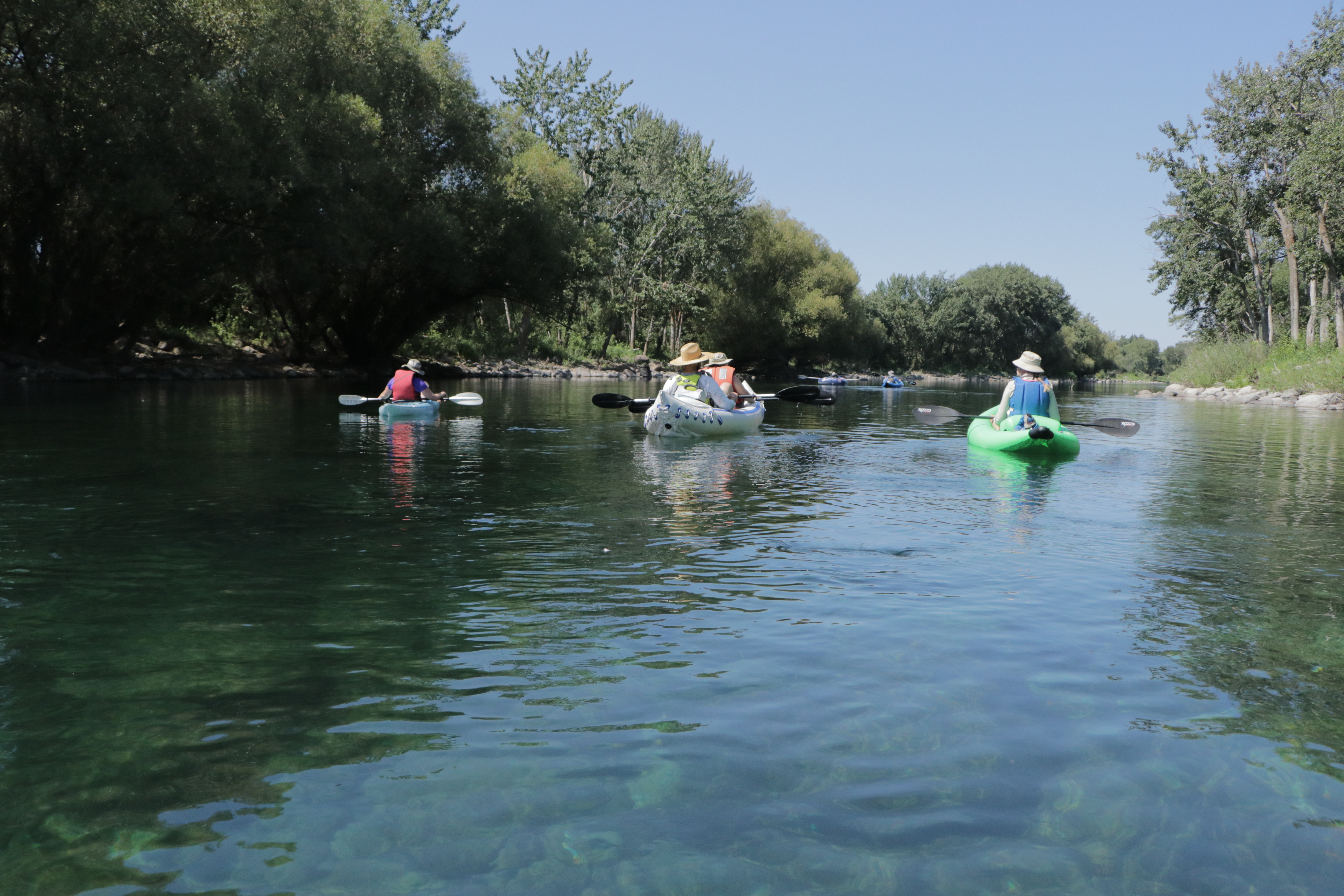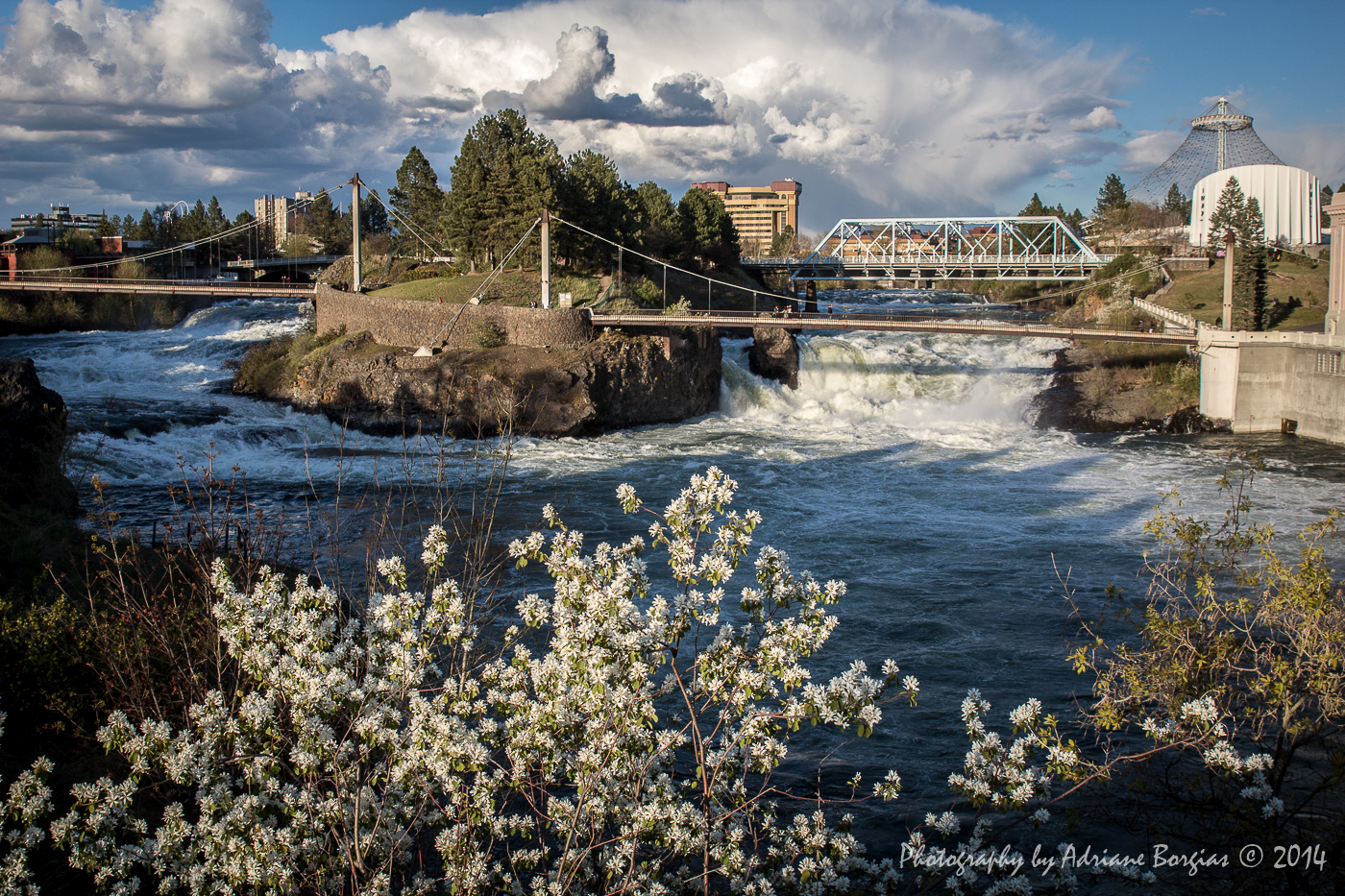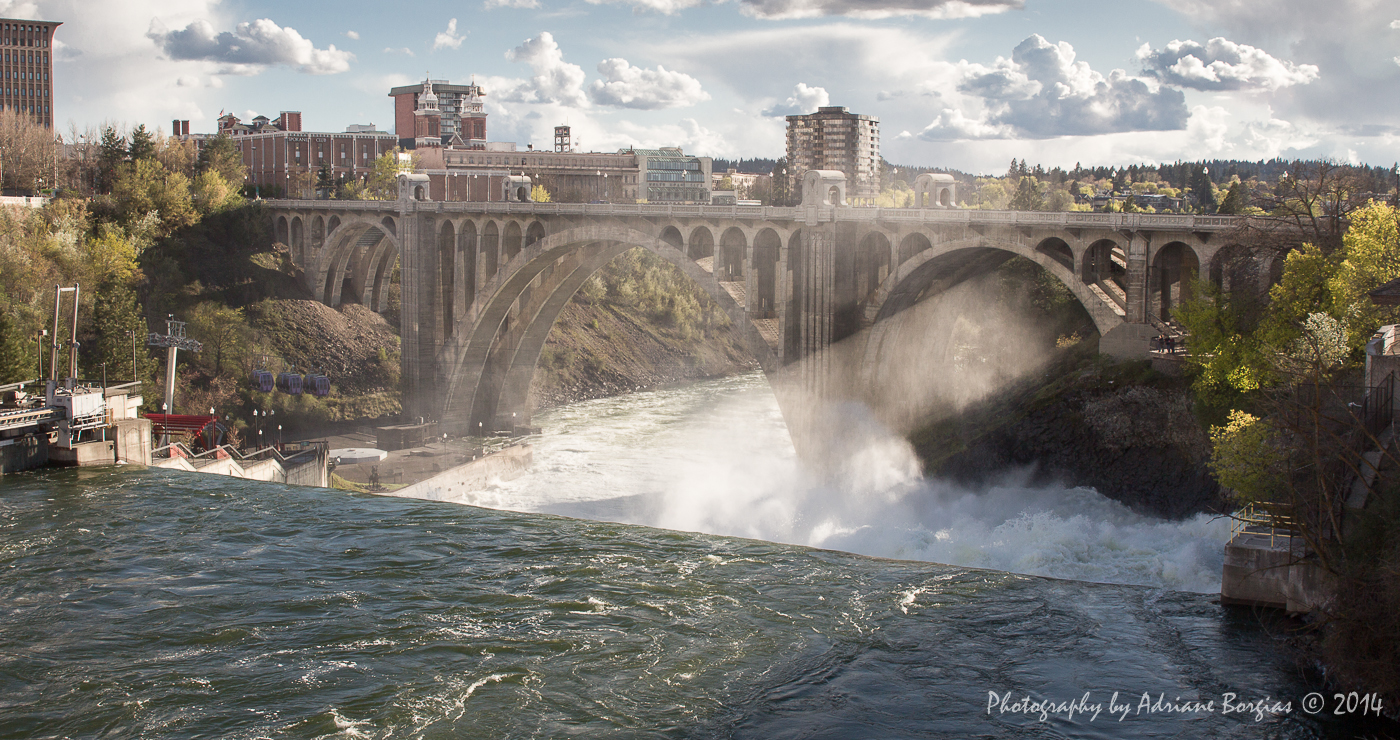Making improvements in the Spokane Watershed
We’re working with our partners to protect the water quality in the Spokane watershed, clean up toxic chemicals, and manage and conserve water for local communities and the natural environment.
The Spokane River and its tributaries generally flows westward from its source at the outlet of Lake Coeur d’Alene in Idaho. The river drains an area of about 6,640 square miles; approximately one-third is in Washington, with the remainder of the watershed in Idaho. Our collaborative efforts help us identify ways to improve the rivers and lake health so that people can continue to use the watershed for recreation, fish habitat, hydropower, and wastewater management.
To stay informed sign up for our Spokane River email list.

Why is the Spokane River watershed important?
The approximately 111 river miles of the Spokane River are home to many species of fish and other aquatic animals. The Spokane River watershed is a complex system that flows through the populated Spokane metropolian area, including Lake Spokane and many tributaries, such as Hangman Creek and the Little Spokane River. The majority of residents in these communities rely on the Spokane Valley-Rathdrum Prairie aquifer for drinking water. This federally designated ‘sole source aquifer’ has a dynamic relationship with the Spokane River with large interchanges between the aquifer and the river.

The watershed is facing many issues that can damage habitat, reduce water quality, and water quantity such as: stormwater runoff, loss of wetland habitat, streambank erosion, and historic use of toxic chemicals. See the Reducing Pollution section below for more specific information for pollution in specific waterbodies and our many projects. Because of the presence of polychlorinated biphenyls (PCBs) in fish, the Washington Department of Health issued a Health Advisory for eating Spokane River fish.
Working to meet water quality standards with permits
We updated our water quality permits to ensure the five Washington wastewater treatment facilities that discharge into the Spokane River continue to meet clean water requirements. The new requirements include strict limitations (numeric limits) on pollutants like phosphorus and polychlorinated biphenyls (PCBs). We also included best management practices (BMPs) for reducing PCBs in a comprehensive and practical way.
Check out our focus sheet for more information about the permit.
Final permit documents
To stay informed, sign up for our Spokane River email list.
Reducing pollution from other sources
Water quality permits are only one of the tools we are using to improve the Spokane River water so people can continue to fish and recreate. We continue to work with partners to improve oxygen levels and reduce toxic chemicals, such as PCBs and metals.
Our PCB Source Assessment Study provided the foundation for a strategy that identified and reduced PCBs at their source in the river basin from 2012-2022.
The Spokane River Regional Toxics Task Force formed in 2012 to identify and reduce sources of PCBs to the river. The task force conducted studies that identified sources of PCBs and measured their prevalence in the river. The task force also prepared a comprehensive plan. The plan contains more than 25 projects and practices that, when implemented, will prevent PCBs from reaching the river.
We evaluated the measureable progress report of the task force and determined that PCBs were removed from the river during the ten years the task force was in existence. The task force sunsetted in 2022 following the decision by EPA to write a PCB TMDL (see more information below).
We have recently formed the Spokane River Toxics Advisory Committee to serve as an advisory forum for issues related to toxics in the Spokane River Watershed with the goal of addressing and mitigating toxics (including PCBs) in the Spokane River.
We work in partnership to clean up several sites in the Spokane River basin where former business practices have left toxic contamination. Select the individual sites below to find out more information about each site.
PCB cleanup sites
Metals cleanup sites
We are working with partners to ensure there is enough oxygen in the water for aquatic life. We have many recommended projects in our Spokane River water improvement plan. We will continue to work with Spokane River Forum and our partners to implement the dissolved oxygen projects.
What’s being done?
- Conservation and environmental groups work directly with landowners to reduce runoff from forestry and agriculture practices. Spokane County's Nonpoint Source Phosphorus Reduction Plan recommends many of these actions.
- Avista completed a Dissolved Oxygen Water Quality Attainment Plan that outlines activities that will help improve oxygen in Lake Spokane.
- Spokane adopted an Integrated Clean Water Plan that helps prioritize projects for managing stormwater and wastewater.
- Cities and industries that release wastewater into the river submit annual monitoring reports on the river's water quality.
- The five wastewater facilities upgraded treatment technology and met strict phosphorus limitations outlined in the water quality improvement plan.
- We completed the Spokane River and Lake Spokane Dissolved Oxygen Total Maximum Daily Load 10-Year Effectiveness Study
Related water improvement projects (TMDL)
| Waterbody | Pollutants | Status |
| Dragoon Creek |
Ammonia-N, chlorine, and total phosphorus |
Approved by the Environmental Protection Agency (EPA) |
| Hangman Creek |
Fecal coliform, phosphorus, temperature, and TSS/turbidity Activities to address these pollutants are expected to also improve dissolved oxygen and pH. |
Approved by EPA and has an implementation plan |
| Little Spokane River |
Dissolved oxygen, pH, total phosphorus |
Approved by EPA |
| Spokane River |
Dissolved oxygen and metals |
Approved by EPA |
| Spokane and Little Spokane River | PCBs | Finalized by EPA Ecology developing implementation plan |
Related links
Contact information
Annie Simpson
Water Quality Planner
annie.simpson@ecy.wa.gov
509-413-7096


